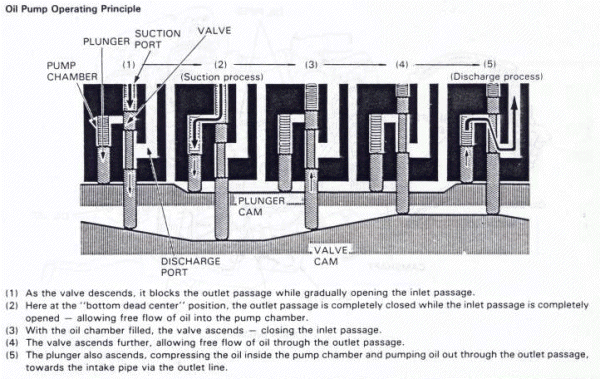|
The Unofficial Yamaha CV80 Owner's Guide
Articles
Inspecting the Oil PumpBecause It's ThereI don't know why I like to take things apart, especially when there is no apparent reason to do so. Take the oil pump on my CV80, for example. There it sits on my workbench. I could clean the old lithium grease off the main gear and around the pump itself and give the whole thing a wipe with a rag and be done with it. But something in me can't resist going farther. I want to dismantle the unit. See what's inside. See if it could use more cleaning. See if I can come to a better understanding of how it works.
Should I do it? I am wondering. My first instinct is to send an email to one of my regular advisors. "Ever take apart the autolube pump on an old Yamaha scooter? Is there a good reason why I should or shouldn't do it?" He replies: "I've never disassembled one but I read somewhere that you shouldn't do it because it renders them inoperable." He included the name of a source for this information, so I promptly sent another email. Shortly after I received the following absurdly cheerful response: "If you take it apart nothing bad will happen. Just put it back together the same way it was!" I'd had enough good sense to copy my original inquiry to another expert, who replied with as much wariness as my other trusted source. "It would be best if you could find a non-working pump and experiment on that," he recommended. I was starting to get the message. Then my first contact came through with a more detailed explanation. "After receiving your e-mail I poked about to see if I had any spare pumps I could dissect. I didn't have any that were obvious throwaways, so I decided to consult my Honda General Service Manual. Judging from the diagram it's one of those things you open and a spring propels everything in different directions. There's a dire warning in the manual." Indeed, he included a scanned page from the manual that indicates:
He also included an illustration of how the oil pump operates—at least for Honda two-strokes.  Now, I don't know how an oil pump for a Honda two-stroke scooter compares to the autolube oil pump system for a Yamaha scooter. But I think their designs must be similar. I know that when I turn the gear end of the Yamaha pump I can feel something moving inside. Perhaps it's the power of suggestion, but nevertheless I sense that a piston is moving as I rotate the gear. And when I rotate it, oil comes out in sync with the perceived pumping action. So there it is. Wiser for my curiosity, I decide to leave well enough alone. I clean the main gear and put the pump aside. It's ready for whenever I get around to assembling the scooter again. And then, the only thing I will do is substitute clear or transluscent lines for the original black intake and discharge hoses—a tip that another wise old motorcycle mechanic offered once. He insisted that black hoses are fine for air lines, but for fuel or oil I should always use something that allows me to visually inspect for bubbles. Sounds good to me. DISCLAIMER
I make no warranty of any kind, either express or implied, including without limitation warranties regarding the accuracy, reliability or completeness of information on this site. Anyone using such information to perform repairs or mechanical work of any kind does so entirely at his or her own risk. In no event will I be liable for any incidental, consequential, or indirect damages.
|
 There are two bolts that hold the halves of the pump together, like a plastic Easter egg. I am tempted to take those bolts out and see what happens. I know from the service manual that all I really need to replace during any serious work is a circlip and an O-ring. But those are at the gear end of the pump. I might not even tamper with that.
There are two bolts that hold the halves of the pump together, like a plastic Easter egg. I am tempted to take those bolts out and see what happens. I know from the service manual that all I really need to replace during any serious work is a circlip and an O-ring. But those are at the gear end of the pump. I might not even tamper with that.